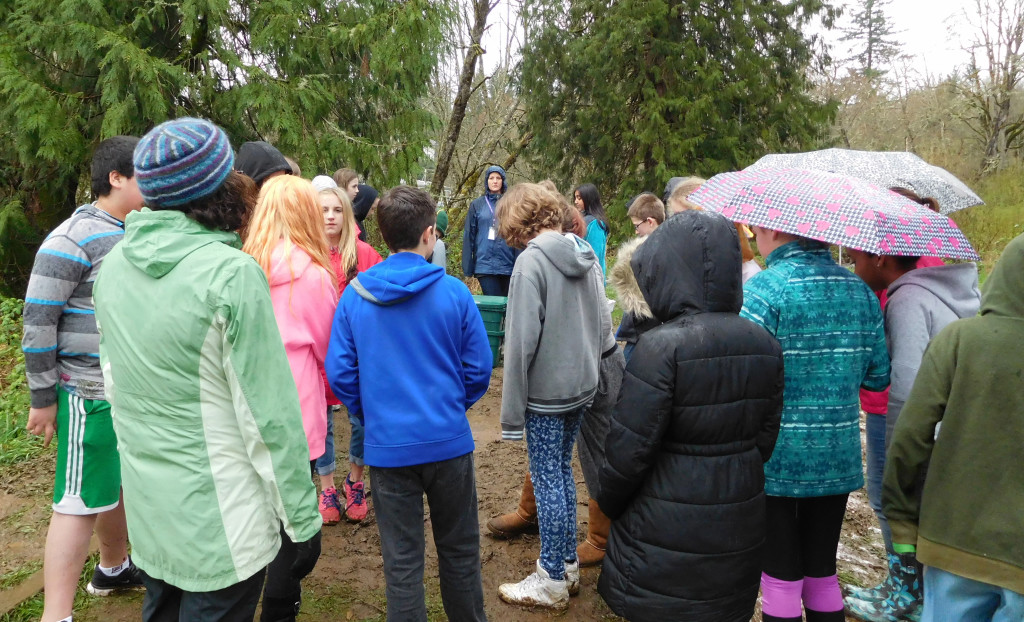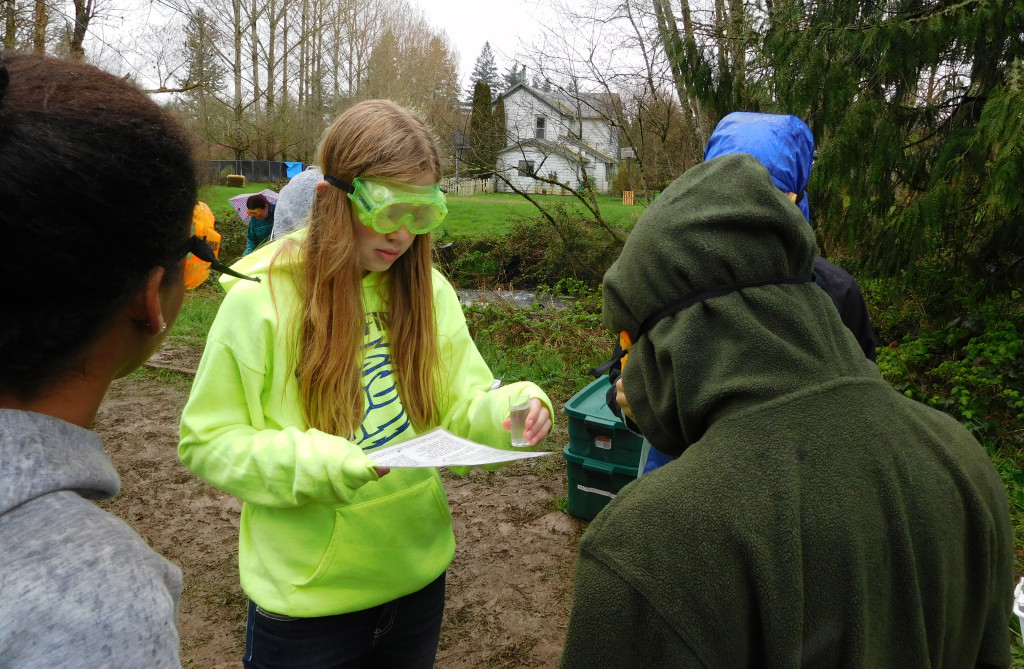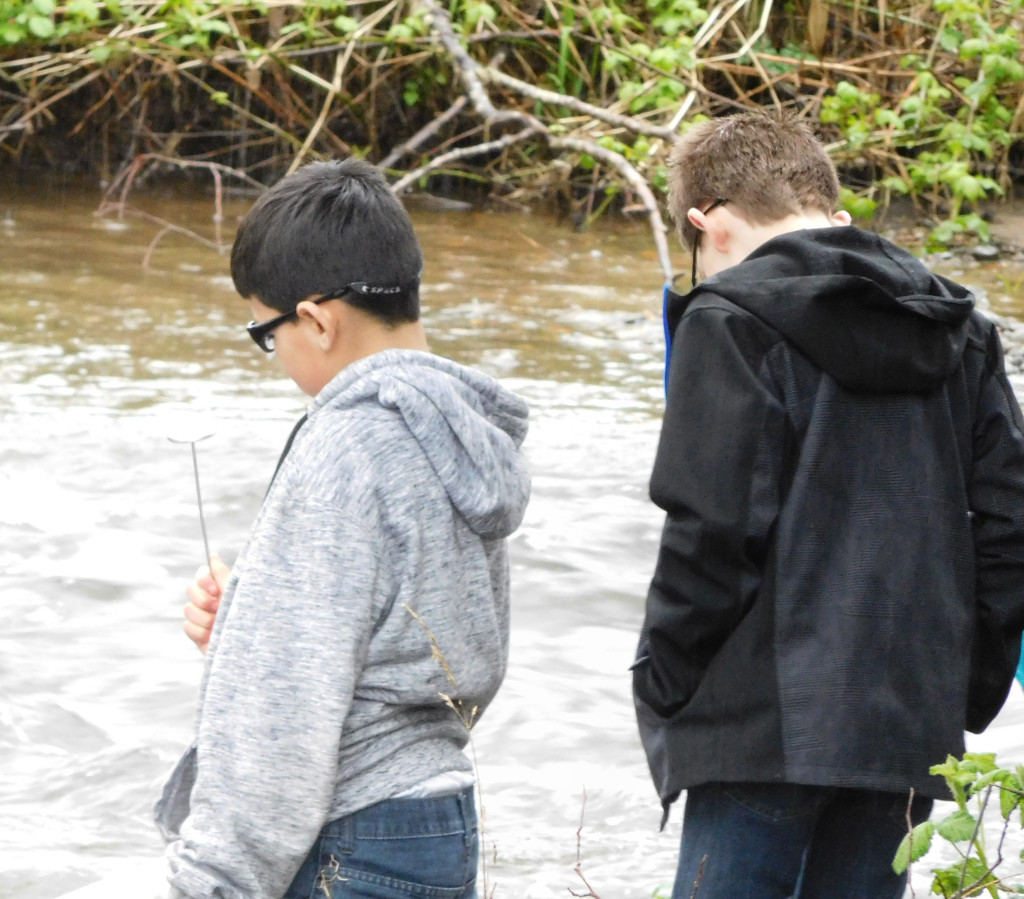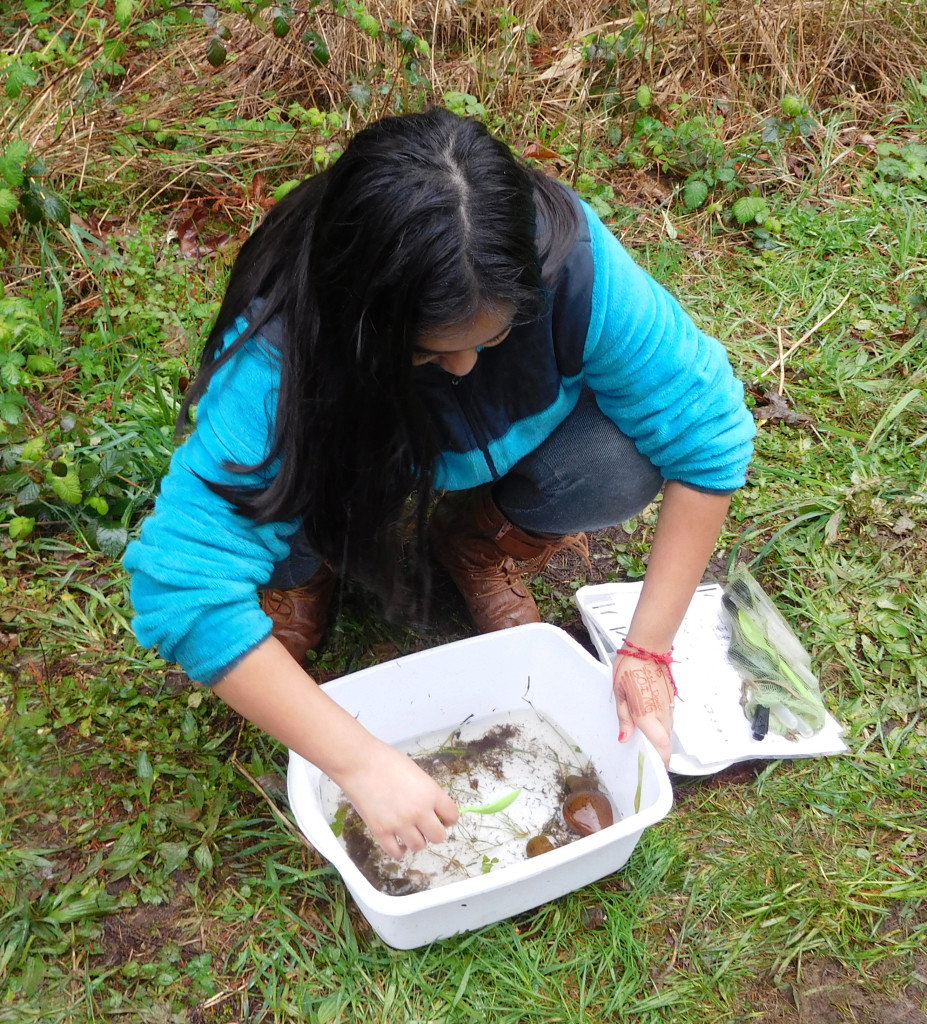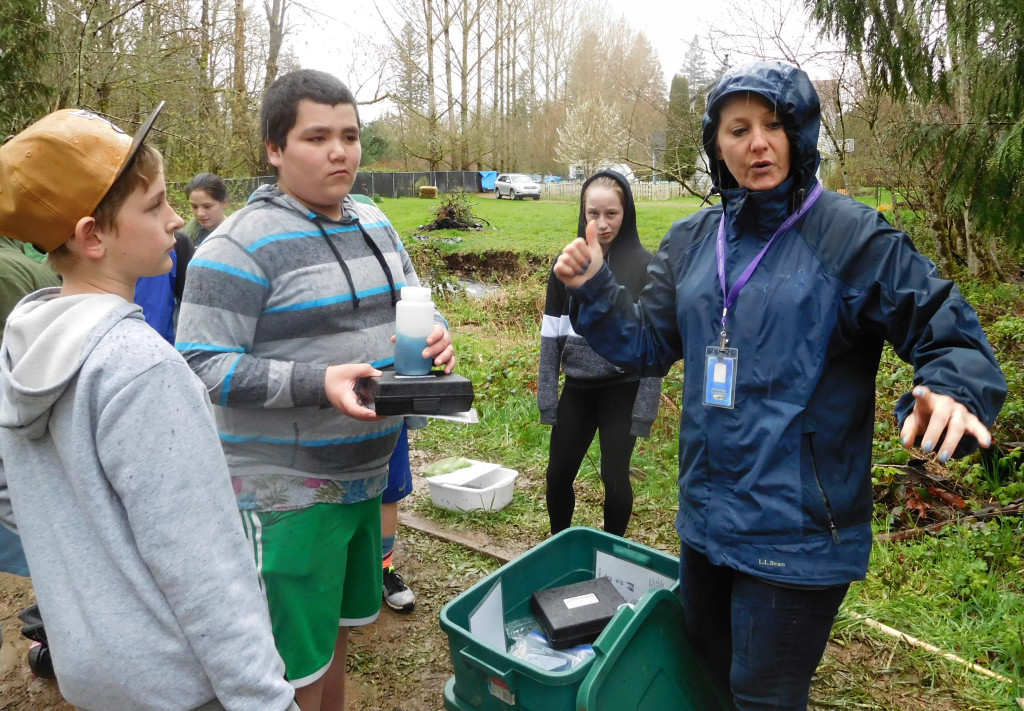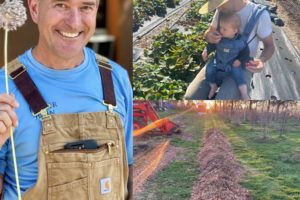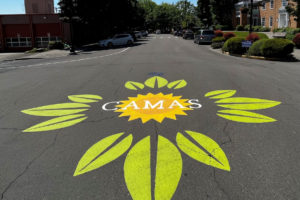When Mona Davies heard a student question disbelievingly that there would be enough to do during three days of outdoor school, a lightbulb went off.
“I was surprised, and the statement made me realize how much time kids were spending inside, or in the car, than outside,” she said. “I try to promote the outdoors as much as possible.”
The Jemtegaard Middle School sixth-grade science teacher decided that more outdoor study time was needed than three days at the end of the school year.
“I enjoy the outdoors and spend as much time outside as possible, and in the past few years have realized how important being outside is to our health.”
Davies decided to utilize nearby Gibbons Creek, so that the students could conduct a year-long study observing the changes in the landscape over time due to weathering, erosion and decomposition.

